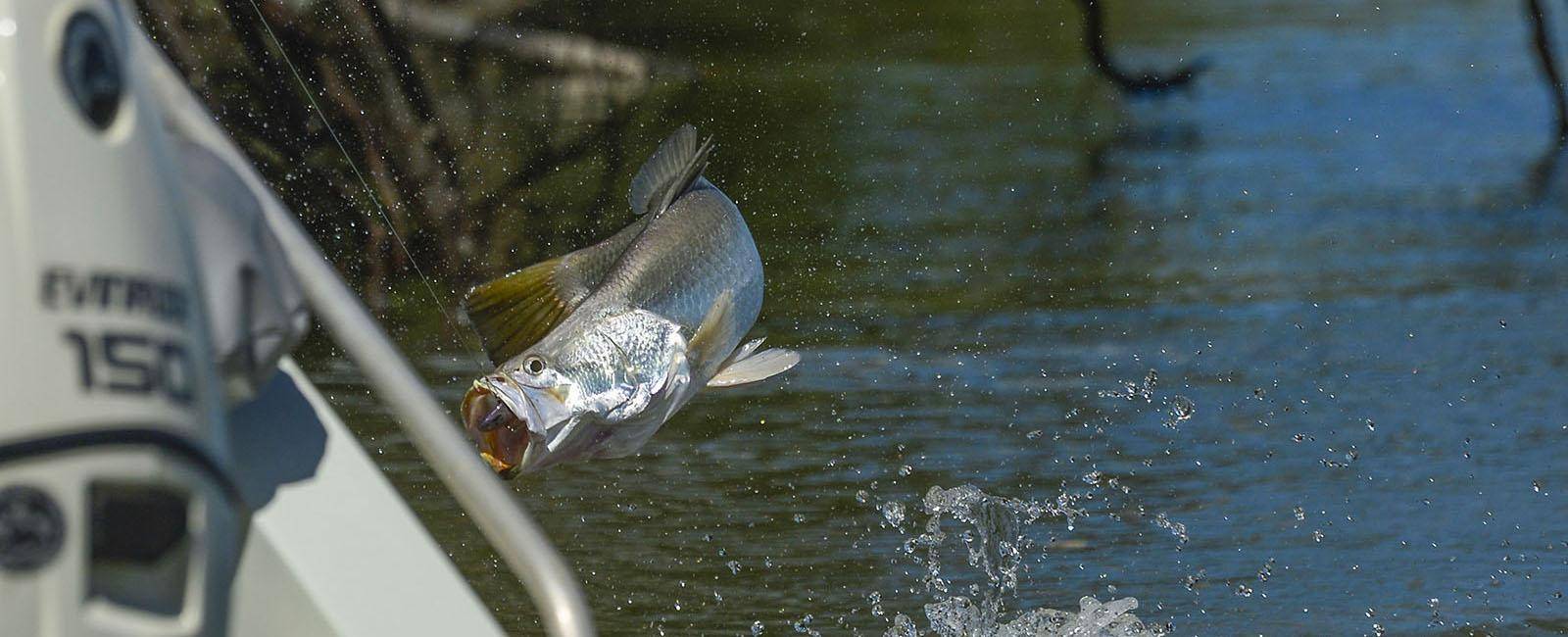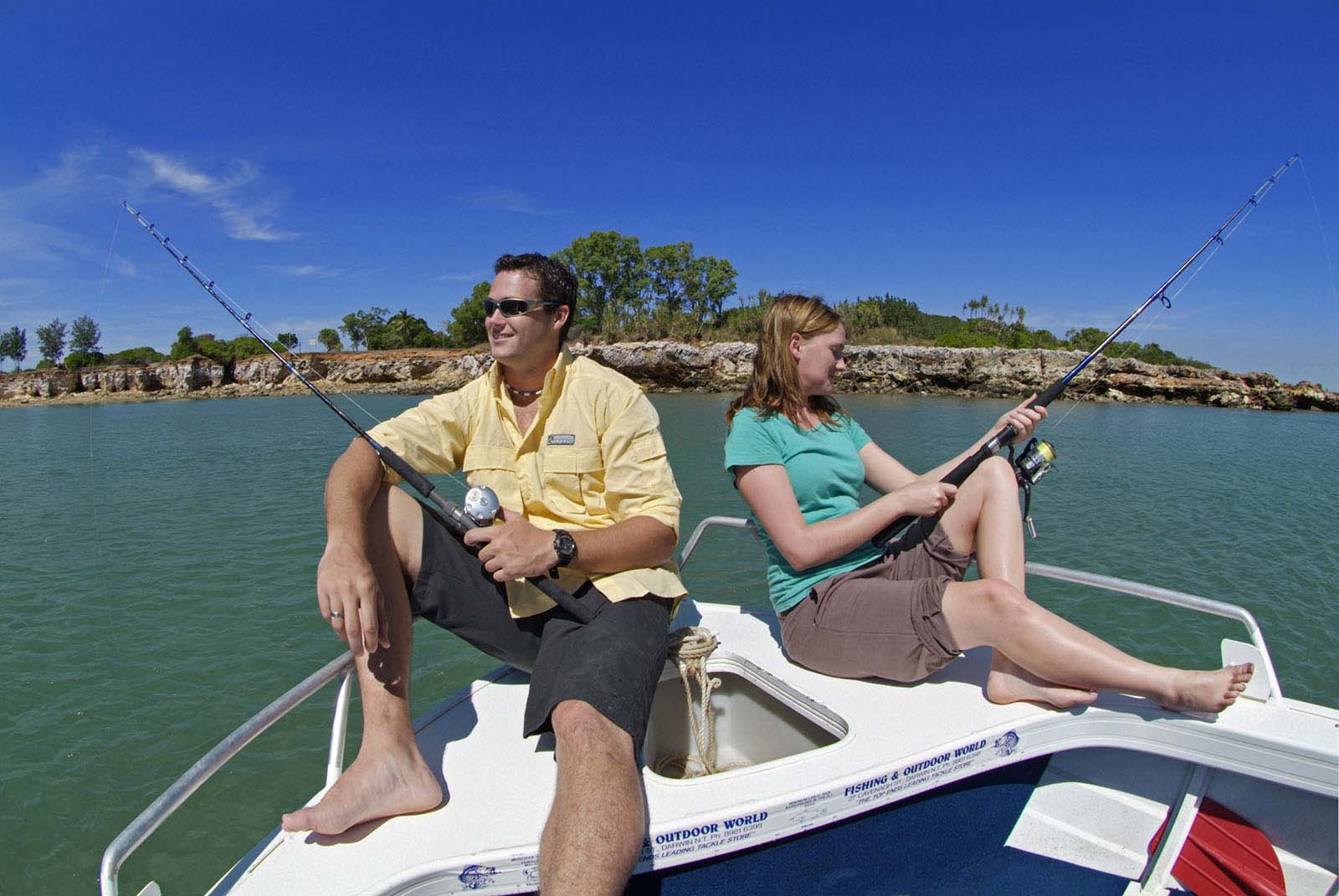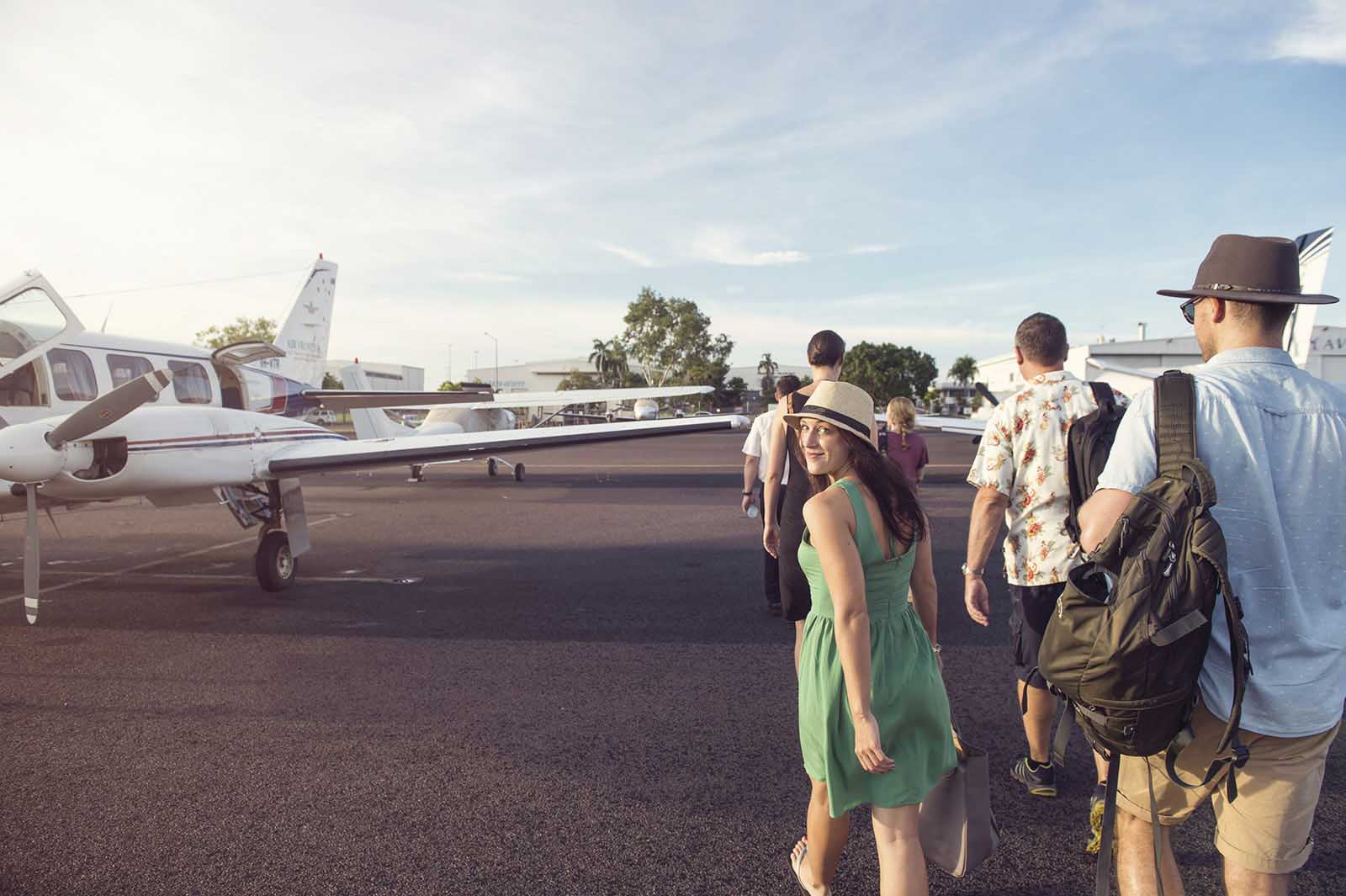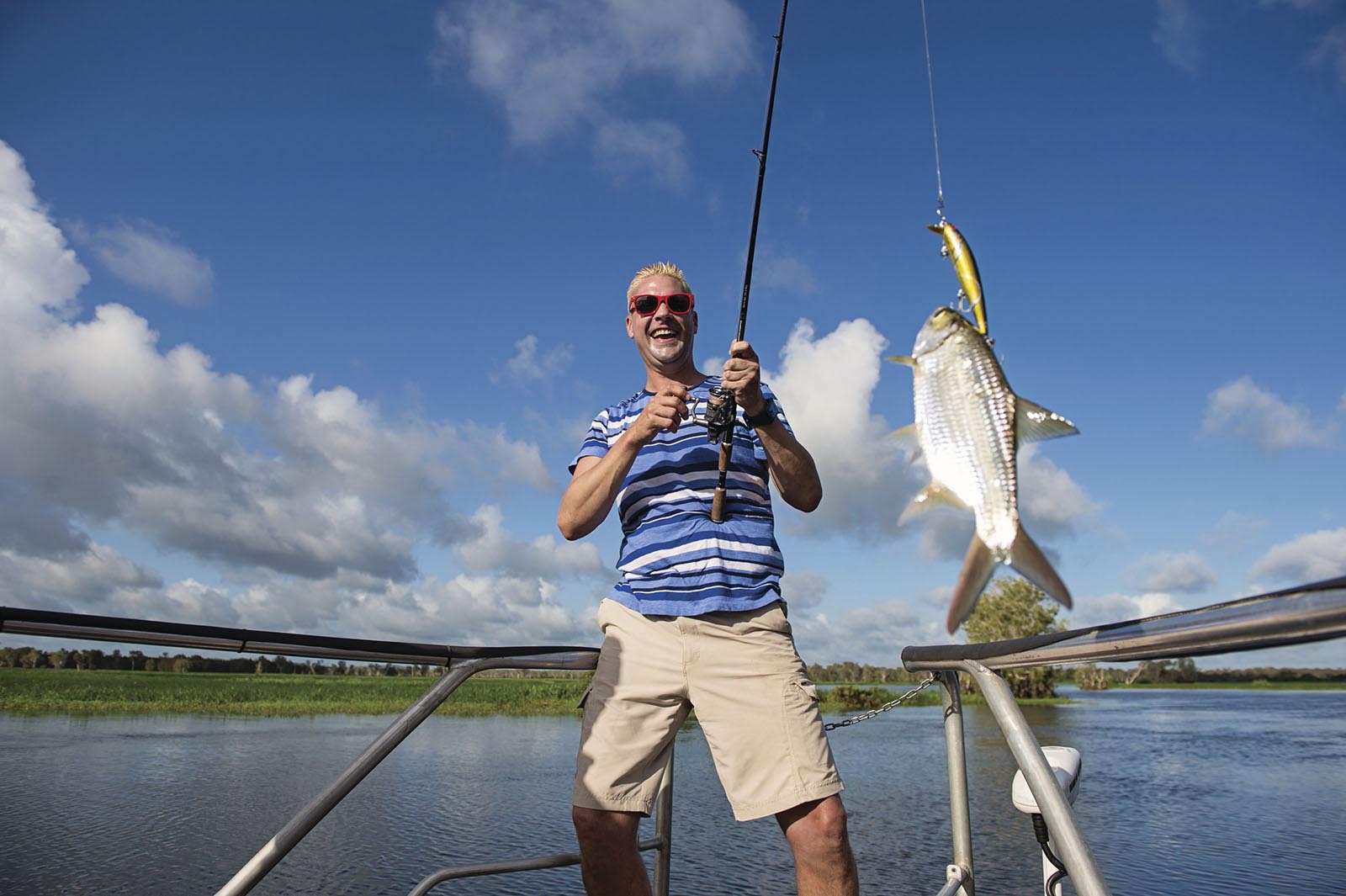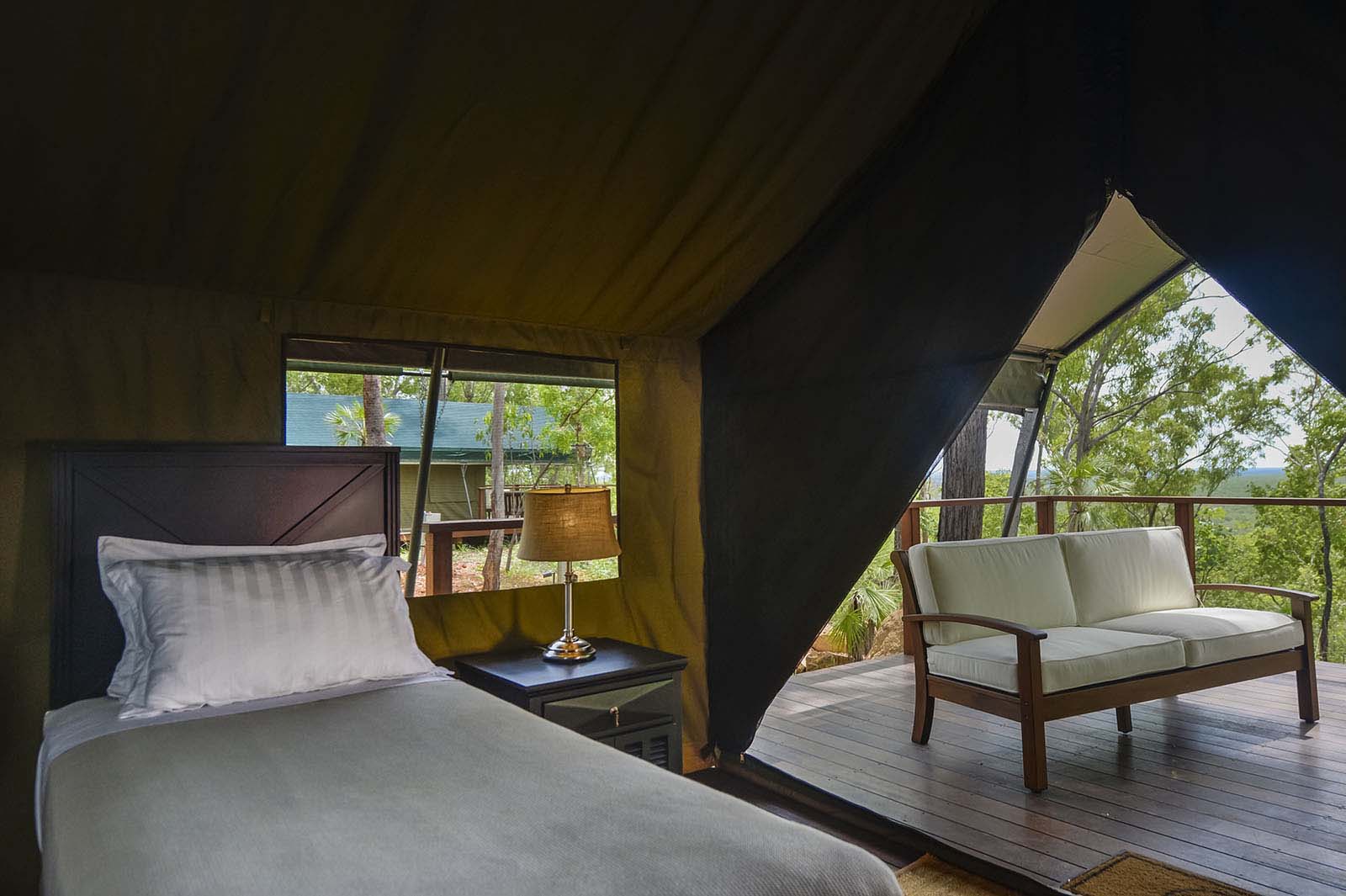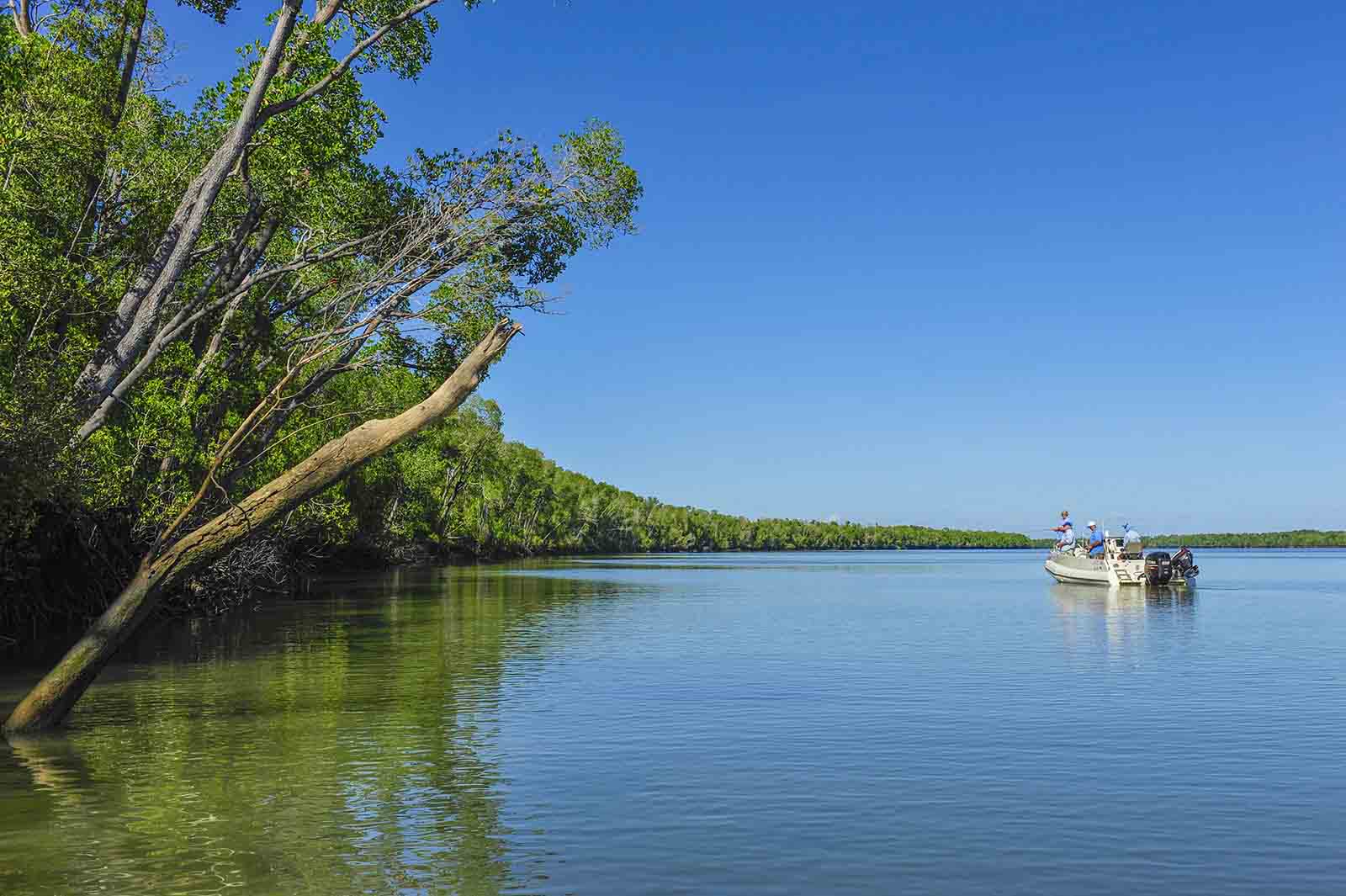
The Northern Territory is home to some of the best fishing in the world, helped by a long-term strategy by the State Government to limit commercial fishing and protect wild stocks. So much so, it’s been a bonanza for the Territory, where one group on a recent trip to Arnhem Land boasted they had caught 350 ‘barras’ just two days into a four-day trip (and released all but enough for dinner), while another guest hooked an impressive one-metre-plus catch of the day!
Thinking of casting off in the Territory? Here's everything you need to know before you go.
When to go
While there's good fishing all year round in the Territory, the season between October and December is particularly good. Known by the locals as the ‘build-up’, this season gets its name from the rising temperatures and humidity before the monsoonal wet season sets in. It’s also the start of breeding season and the local barra get more active – teasing the fishermen on their tails.
Million Dollar Catch
And there’s another lure to hook a barra in Territory waters each year. The annual Million Dollar Fish competition tempts fishermen from far and wide, of all ages and skills, with five months to try to catch 101 tagged barramundi that have been released across the Top End – one fish carries a whopping $1 million tag while 100 others carry a tag worth $10,000 each.
Top sport for Barramundi
Even without that teaser, barramundi fishing is the national sport in the Northern Territory, the fish everyone wants to catch – and catching one is quite an adventure, says Alex Julius, fishing guru and editor of the National Australian Fishing Annual, based in Darwin.
“It grows big, it gets out of the water and leaps across the surface with spectacular jumps. It’s a stunning fish to look at, silvery white – there’s hardly another fish that’s more attractive to look at – and it’s bloody good eating,” he says.
But even this die-hard angler says the experience is not all about the fish. “Your eyes are always looking at nature: birds, animals – crocodiles as well but that’s all right as long as you stay out of the water – beautiful lily pads and wonderful vegetation, cycads, paperbarks and all that.”
The Northern Territory has a vast network of waterways – huge tidal rivers, inland billabongs, mangrove-lined estuaries, a harbour vastly bigger than the one in Sydney and a picturesque coastline. So where does a beginner, well, begin?
Darwin
The harbour has been closed to commercial netting for more than 20 years so this is a good place to start, says Julius. It’s easily accessible, big and exploring any of the harbour arms is like going back 500 years, to see the land as it used to be. “Shoal Bay, fed by the Howard River, is very good barramundi fishing in the build-up,” says Julius. Large barramundi are regularly caught at ‘The Rock’ in Shoal Bay during the build-up.
Lesser known to outsiders is the good bottom fishing in Darwin Harbour. Artificial reefs provide good catches of jewfish, coral trout and golden snapper, and crabbing is also good, says Julius. There are many charter and tour operators for beginners and experts alike, check out Darwin Harbour Fishing Charters.
Even if you don’t catch anything the ‘Best Fish and Chips in Australia’ are – you guessed it – in Darwin at Frying Nemo, which was announced the winner of a nationwide vote in 2017.
Tiwi Islands
Bathurst and Melville islands, known as the Tiwi islands, lie about 80km north of Darwin where there is some great estuary fishing for barramundi and excellent blue water fishing, but access is not allowed without a permit and travel is by ferry or light aircraft from Darwin. This is a trip best taken with a guided tour like Tiwi Adventures.
Kakadu
World heritage-listed Kakadu National Park has a rich Aboriginal cultural heritage and some excellent fishing but strict regulations apply. Within the park the tidal sections of the South and East Alligator Rivers are easily accessed by sealed roads and concrete boat ramps. There are dozens of pristine billabongs on Kakadu’s floodplains and plenty of barramundi to be caught at most of them and Julius reckons the region comes into its own during the run-off (March and April). Shannon Summerton is one of the converted who came from Adelaide and didn’t want to go back. Now he runs Kakadu Fishing Tours.
Arnhem Land
Arnhem Land is the largest and most remote Aboriginal land reserve in the country and the best way to travel here is with an accredited tour operator who will look after all the required permits and offer guiding services, equipment and even accommodation. Remember those big catches mentioned earlier? They were caught by guests at Arnhem Land Barramundi Lodge, near the Aboriginal community of Maningrida, about 300km (a 60-minute flight) north east of Darwin. The fishing here is so good, guests are known to get cranky if barra is not on the dinner menu.
Katherine
The Victoria River region to the west, the Daly River to the north west, Kakadu to the north east and the Roper River and Borroloola region to the south east all provide good fishing from Katherine. Julius’s tip is to call in to see Warren De With at Rod and Rifle Tackleworld in town to get the local knowledge about where to go, what you need and even where to stay. In fact this is a hot tip for any location – the local tackle shop will have their finger on the pulse of where the fish are biting.
The Roper is famous for its barramundi fishing, particularly east of Roper Bar, the crossing separating the saltwater and freshwater sections of the river. It provides great lure fishing during the run-off, but there’s good barra to be caught through the dry season (May to September) too on live bait.
Julius admits the Daly River is a favourite of his, halfway between Darwin and Katherine.
“It’s the most beautiful river in the Northern Territory in my opinion, and it’s almost all barra fishing.”
This is where you’ll find the river lined with rainforest and tall paperbarks. The bonus is that many that have fallen into the river over the years now provide perfect snag habitats for barramundi.
PLAN YOUR TRAVEL
GETTING THERE
CREDITS

